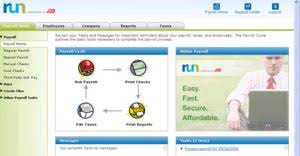
The conformity rule of IRC § 472(c) requires those companies to also
use it for financial accounting purposes. On the balance sheet, the inventory value is reduced by the amount of the LIFO reserve. This is because the LIFO method tends to understate ending inventory on the balance sheet by valuing it at older, lower historical costs rather than current replacement costs. It reflects the amount by which inventory is undervalued relative to actual price levels.

Absent relief from the Treasury Department, it would
require them to change their tax method of inventory reporting. If the company reports inventory with the LIFO method, the COGS will be higher, and the gross profit will be low. In this way, the company will have to pay low taxes than what they would have to pay by using the FIFO method. The disclosure of the LIFO lifo reserve journal entry reserve allows readers to better compare the financial statements of a company using LIFO with the financial statements of a company using FIFO. A higher LIFO reserve generally indicates rising inventory costs over time. Tracking this reserve provides useful insight into cost trends and the potential tax implications if inventory levels decline significantly.
Want More Helpful Articles About Running a Business?
That inventory value, as production costs rise, will also be understated. Over time, LIFO can have a significant cumulative downward effect on
the inventory’s value. The cost of goods sold for any particular year
equals the sum of beginning inventory, plus purchases, less ending
inventory. Thus, a lower ending inventory increases cost of goods sold
and reduces taxable income.
- Built-in LIFO reserve calculators simplify the process and reduce errors.
- Any material increases or decreases in inventory should trigger a corresponding adjustment in the LIFO reserve balance.
- The Section keeps members up to date on tax
legislative and regulatory developments. - That is, it is used primarily by businesses that must maintain large and costly inventories, and it is useful only when inflation is rapidly pushing up their costs.
- Absent relief from the Treasury Department, it would
require them to change their tax method of inventory reporting. - It is sometimes referred to as a “hidden tax,” as it leaves taxpayers less well-off due to higher costs and “bracket creep,” while increasing the government’s spending power.
The business organization uses different methods for evaluating inventory but for presentation purposes. Hence, the organization may use FIFO or weighted average accounting and LIFO methods for presentation. It is nothing but the difference between valuation per the organization’s regular methods and valuation per the LIFO method. It is used to offset the operating losses, the difference due to inventory valuation, etc. Still, the process involved in calculating LIFO Reserve is very lengthy and time-consuming.
Understanding LIFO Reserve
Brad would now like to run a report for his partners that shows the cost of goods sold. Other methods of determining inventory movements include FIFO (first in first out) and Average Cost. The LIFO method offers two major advantages related to satisfying the matching principle and paying taxes. The Tax Adviser and Tax Section
The Tax Adviser is available at a reduced subscription price
to members of the Tax Section, which provides tools, technologies and
peer interaction to CPAs with tax practices. The Section keeps members up to date on tax
legislative and regulatory developments. The current
issue of The Tax Adviser is available at /pubs/taxadv.
